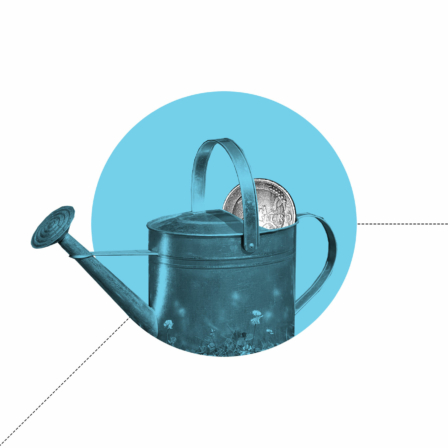The circular economy is integrated into structures. The circular economy is a phenomenon that can be compared to digitisation, requiring an approach that crosses the boundaries of administrative sectors and levels. Separate processing of matters in one sector is not enough, but all administrative sectors must be brought into the circular economy game.
Co-operation between ministries lies at the heart of everything. Good examples of applying the human-oriented way of thinking included in the circular economy have been seen in the Agenda for Sustainable Growth facilitated by the Ministry of Economic Affairs and Employment, the Finnish Government’s Bioeconomy and Clean Solutions Programme and the Finnish National Commission on Sustainable Development from the Prime Minister’s Office (links in Finnish). More broad-based circular economy thinking is needed to provide content for these initiatives. On the other hand, one must be able to think about how, in future, circular economy issues could be tackled in a more efficient and effective manner by the central government.
In the future, the promotion of the circular economy must be a continuous strategic activity.
This calls for high prioritisation of the circular economy during the government term and parliamentary co-operation extending beyond individual government terms. The financial resources should be targeted to the goals set in accordance with the philosophy of impact investing; short-term costs are regarded as enablers of effectiveness in the longer term. What if Finland had a joint circular economy budget for the whole administrative sector, involving combined input from the best experts from the various ministries and a distribution of money to carefully considered entities according to impact?
The central government plays a key role in streamlining the circular economy and in the implementation of smart and stimulative steering and regulation. Public research, development and innovation funding enables circular economy research in the education and corporate fields as well as the development and commercialisation of innovations. The green deal agreements between the state and business sectors have turned out to be a good way of promoting the circular economy, and more similar commitments should be attracted (link in Finnish).
To ensure the required extent of change, both legislative and economic steering methods must be introduced. If implemented, measures such as a sustainable development tax shift would have a major impact. The focus of taxation should be shifted from the taxation of labour and entrepreneurship to the taxation of adverse environmental impacts – in other words, we should impose less tax on things that we do want than on the things that we do not want. Finland must conduct a comprehensive impact assessment and use that as a basis for creating a foreseeable and long-term road map for taxation. A tax shift for sustainable development is a way of creating a market in Finland for which there will be growing demand in the future.
With its own activities, the central government can encourage change and create demand for circular economy solutions. Any procurement made by the state must be sustainable and compliant with the principles of the circular economy from a full life-cycle perspective. Furthermore, the related goals and criteria must be included in all public procurement by default. Any funding awarded by the state must also be evaluated from the viewpoint of whether it promotes the implementation of the circular economy or not.
Enjoying the fruits of ambition
Having made a transition to a circular economy by 2025, Finland will have redefined its conception of progress. Small steps and major leaps to a carbon-neutral circular economy will have started a whole new economic game, where the profits are shared on totally different grounds to those in the era of overconsumption. In the same manner as in the old linear economy, the game will be honed in an increasingly seamless and efficient direction – only the starting points will have totally changed.
When Finland is able to fully exploit the global market potential of a carbon-neutral circular economy, the ambitious home markets will serve as a foundation upon which companies generate and use new solutions. This will attract foreign investment to Finland. Consumption habits will have changed and will now rest on a sustainable basis – no waste is produced, and business profits are no longer generated by overconsumption.
The circular economy will have created new business operations and jobs in various regional economies. Towns and cities will become important enablers of the circular economy. The local built and data infrastructure (energy, mobility, built environment, waste treatment and water management) and services will function as development platforms for market access and the scaling up of new solutions. The circular economy will lie at the core of competitiveness and vitality.
Finland will use its natural resources in a sustainable manner.
The sustainable use of natural resources, with the help of material circularity, will also have provided a solution to the prevention of biodiversity loss. Habitat loss and degradation has been a key factor in the endangerment of species and habitat types. The transition to a circular economy will have reduced the effect of this factor, owing to the diminished need to exploit virgin natural resources. The pressure for new land development will have decreased because of the greater reuse of built areas or because of the offsetting of the degradation of the living environment in one area by improvements in other areas.
The circular economy is based on the use of low-carbon energy. Sustainably produced renewable energy (such as wind and solar power and geothermal energy) will be used as source of energy to the highest extent possible. The surplus energy and side streams from the energy industry and other industries will be used as efficiently as possible in industrial symbioses. And the elasticity of demand (through the steering of electricity consumption) and energy efficiency will have been increased in the final use of energy (link in Finnish).
Figures prove the success of cross-sectoral thinking
In 2025, the number of joint spearhead and other projects aimed at promoting the circular economy between ministries will continue to increase. Clear growth will also be seen in the following:
1) public investment targeted to R&D&I activities promoting the circular economy;
2) the share of procurement including sustainable development and/or circular economy criteria in relation to overall state procurement; and
3) the number of steering methods to promote change – for example, the share of environmental taxes of total tax revenue will have increased.






ACTIONS
Find an action you can take or create your own!